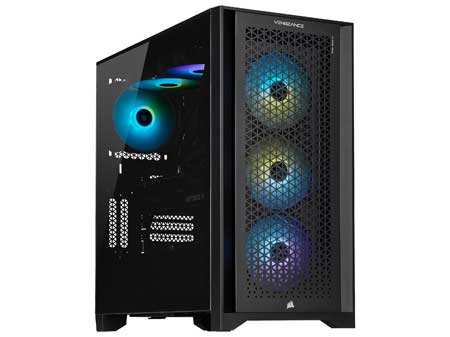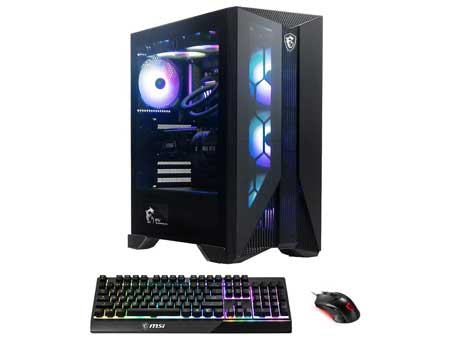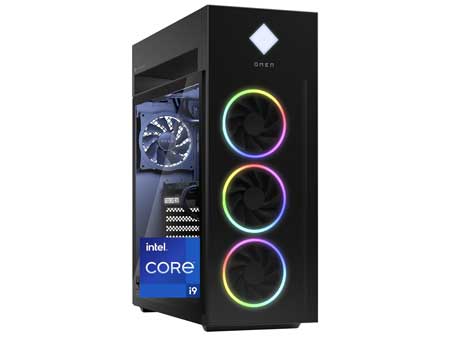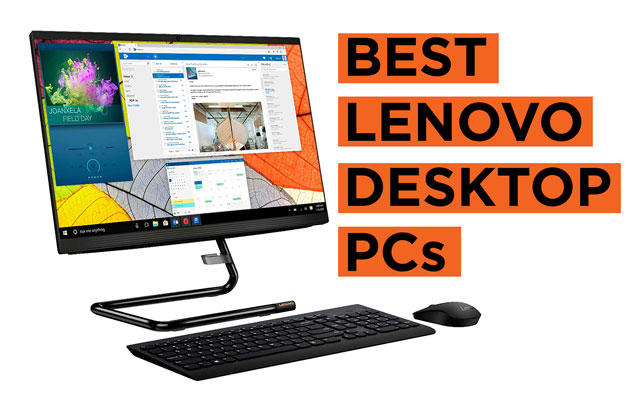We’ve written this guide for architects, computational designers, and digital fabricators who work inside Grasshopper for Rhino. The desktop computer you buy plays a critical role when you’re shaping adaptive facades, automating layouts, iterating urban massing, or controlling generative form with sliders and logic trees for responsive, fluid, and efficient your design process feels.
While it’s not a GPU-centric application, Grasshopper heavily relies on CPU computation, RAM allocation, and single-core responsiveness.
Here’s the reality: parametric modeling isn’t visually heavy, but it’s computationally intense. Each Grasshopper definition can include hundreds of nodes, recursive algorithms, or nested data trees. Every time you nudge a parameter, your CPU recalculates the entire geometry chain.
To solve that, we’ve evaluated desktops on real-world Grasshopper tasks: dynamic paneling, daylight simulation prep, urban scripting, subdivision geometry, and integration with plug-ins like Kangaroo, Ladybug, and Human. Our goal is to make sure your system doesn’t stall when your ideas grow in complexity.
Let’s begin by setting clear minimum hardware expectations for a Grasshopper-ready machine:
CPU: Intel Core i9-14900K or AMD Ryzen 9 7900X. These CPUs balance excellent single-core speed (for real-time UI responsiveness) with strong multi-core power (for batch computations, recursive scripting, or plug-in evaluations). Grasshopper solvers like Kangaroo benefit from high clock speeds, and long chains of mathematical operations run best on high-performance cores.
RAM: 64GB DDR5. Grasshopper definitions with large data trees, mesh operations, or Rhino Geometry Pipeline access can quickly consume system memory. Sufficient RAM prevents crashes during previews, mesh subdivisions, or running simulations involving large point clouds or Boolean logic.
GPU: NVIDIA RTX 4060 Ti or AMD Radeon RX 7700 XT. While Rhino’s display pipeline is GPU-accelerated, Grasshopper’s computation is largely CPU-bound. A competent GPU ensures a responsive viewport and allows for better performance with real-time shading, shadows, and texture previews, especially for baked geometry or large 3D files.
Storage: 1TB NVMe SSD. Fast storage is critical for file access, definition loading, geometry caching, and plug-in data exchanges. When working with referenced CAD files, BIM exports, or geospatial data, NVMe speeds reduce load times and keep you focused.
Display and I/O: High-resolution (4K or QHD) monitor support with wide color accuracy for design review and presentation. USB-C, USB 3.2, and HDMI/DisplayPort outputs allow easy connection to tablets, CNC machines, or external drives—useful for fabrication workflows.
Now, let’s break down the key performance areas that matter most in Grasshopper environments:
Live Parameter Updates
Every slider or input node triggers a recomputation. That’s where single-thread performance counts. A CPU like the i9-14900K offers fast instruction execution, which keeps feedback nearly instantaneous. This is especially important for iterative workflows, early-stage design studies, or algorithmic geometry generation.
Data Tree Handling & Recursive Logic
Grasshopper relies heavily on structured data branches, paths, and nested lists. If you’re working with thousands of points or surfaces, performance can drop sharply. Sufficient RAM and strong CPU threading help handle deep tree manipulations, especially when using Anemone, Hoopsnake, or custom Python/C# scripts.
Plug-in Compatibility & Simulation
Add-ons like Ladybug (environmental analysis), Karamba3D (structural simulation), and Kangaroo (physics) extend Grasshopper into computation-heavy territory. Some plug-ins generate iterative feedback loops, which demand multi-core power and generous RAM headroom to solve constraints, forces, or climate data overlays.
Viewport Display
Although Grasshopper isn’t render-focused, you still need responsive 3D interaction when previewing or baking geometry. A capable GPU ensures you can rotate, zoom, and navigate large urban models, façade systems, or lattice structures without stutter—particularly with shaded or ghosted display modes.
Multi-Application Performance
Parametric workflows often move between Rhino, Grasshopper, Illustrator, Revit (via Rhino.Inside), and analysis tools. A powerful desktop maintains speed when running multiple apps or plugins concurrently, ensuring productivity during data transfer, exports, or when jumping between tools mid-session.
Exporting and Documentation
Exporting geometry to DWG, STL, SVG, or IFC requires disk speed and memory overhead. High-speed SSDs reduce export lag, and strong CPUs help process geometry faster—especially for model tessellation, file parsing, or flattening for CNC/Fabrication workflows.
With these computers, expect immediate slider feedback, consistent performance with large definitions, high stability under plug-in pressure, and fast geometry baking.
These are the Best Desktop Computers for Grasshopper (2025):
Contents
- Corsair Vengeance a7300 Series Gaming PC - Liquid Cooled AMD Ryzen™ 7 7700X CPU - NVIDIA® GeForce RTX™ 4070 Ti
- Corsair Vengeance i7400 Series Gaming PC - Liquid Cooled Intel® Core™ i7 13700K CPU - NVIDIA® GeForce RTX™ 4070 Graphics - 32GB
- MSI Aegis RS Gaming Desktop, 13th Gen Intel Core i7-13700F, GeForce RTX 4060, 32GB RAM, 2TB SSD
- Lenovo Legion T5 Gen 8 Gaming Tower Desktop, AMD Ryzen 7 7700, NVIDIA GeForce RTX 4070, 64GB DDR5 RAM, 2TB
- HP OMEN 45L Gaming Desktop, 13th Generation Intel Core i9-13900KF, 16 GB RAM, 1 TB Solid State Drive, NVIDIA GeForce RTX 4070 Ti
- Alienware Aurora R16 Gaming Desktop - Intel Core i9-13900F, 32GB DDR5 RAM, 1TB SSD + 1TB HDD, NVIDIA GeForce RTX 4070
Corsair Vengeance a7300 Series Gaming PC - Liquid Cooled AMD Ryzen™ 7 7700X CPU - NVIDIA® GeForce RTX™ 4070 Ti |
|
|---|---|
 See This On Amazon |
|
| CPU | AMD Ryzen™ 7 7700X |
| Processor Speed | 4.5 GHz |
| GPU | NVIDIA® GeForce RTX™ 4070 Ti |
| Graphics Card Memory | 12 GB |
| RAM | 32GB |
| Storage Space | 1TB M.2 NVMe SSD |
| Operating System | Windows 11 |
| Dimensions | 17.8 x 9.1 x 18.3 inches |
| Keyboard & Mouse | Sold Separately |
| Computer Monitor | Sold Separately |
| Advantages | Outstanding performance |
| Disadvantages | Storage |
Corsair Vengeance i7400 Series Gaming PC - Liquid Cooled Intel® Core™ i7 13700K CPU - NVIDIA® GeForce RTX™ 4070 Graphics - 32GB |
|
|---|---|
 See This On Amazon |
|
| CPU | Intel® Core™ i7 13700K |
| Processor Speed | 3.6 GHz |
| GPU | NVIDIA® GeForce RTX™ 4070 |
| Graphics Card Memory | 12 GB |
| RAM | 32GB |
| Storage Space | 1TB M.2 NVMe SSD |
| Operating System | Windows 11 |
| Dimensions | 17.8 x 9.1 x 18.3 inches |
| Keyboard & Mouse | Sold Separately |
| Computer Monitor | Sold Separately |
| Advantages | Performance, |
| Disadvantages | Storage |
MSI Aegis RS Gaming Desktop, 13th Gen Intel Core i7-13700F, GeForce RTX 4060, 32GB RAM, 2TB SSD |
|
|---|---|
 See This On Amazon |
|
| CPU | Intel Core i7-13700F |
| Processor Speed | 5.2 GHz |
| GPU | GeForce RTX 4060 TI |
| Graphics Card Memory | 8 GB GDDR6X |
| RAM | 32GB |
| Storage Space | 2TB SSD |
| Operating System | Windows 11 |
| Dimensions | 16.93" x 8.46" x 17.72" |
| Keyboard & Mouse | Included |
| Computer Monitor | Sold Separately |
| Advantages | Performance, Price |
| Disadvantages | n/A |
Lenovo Legion T5 Gen 8 Gaming Tower Desktop, AMD Ryzen 7 7700, NVIDIA GeForce RTX 4070, 64GB DDR5 RAM, 2TB |
|
|---|---|
 See This On Amazon |
|
| CPU | AMD Ryzen 7 7700 |
| Processor Speed | 5.3 GHz |
| GPU | NVIDIA GeForce RTX 4070 |
| Graphics Card Memory | 12GB |
| RAM | 64GB DDR5 |
| Storage Space | 2TB WD_Black SSD |
| Operating System | Windows 11 |
| Dimensions | 16.77 x 15.62 x 8.07 inches |
| Keyboard & Mouse | Sold Separately |
| Computer Monitor | Sold Separately |
| Advantages | Very good performance, Great price |
| Disadvantages | None |
HP OMEN 45L Gaming Desktop, 13th Generation Intel Core i9-13900KF, 16 GB RAM, 1 TB Solid State Drive, NVIDIA GeForce RTX 4070 Ti |
|
|---|---|
 See This On Amazon |
|
| CPU | Intel Core i9-13900KF |
| Processor Speed | up to 5.80 GHz |
| GPU | NVIDIA GeForce RTX 4070 Ti |
| Graphics Card Memory | 12GB |
| RAM | 32 GB DDR5 |
| Storage Space | 1 TB 1 TB PCIe NVMe M.2 SSD |
| Operating System | Windows 11 |
| Dimensions | 8.03 x 18.5 x 21.85 inches |
| Keyboard & Mouse | Sold Separately |
| Computer Monitor | Sold Separately |
| Advantages | Low power use, Looks good, powerful |
| Disadvantages | Quite expensive |
Alienware Aurora R16 Gaming Desktop - Intel Core i9-13900F, 32GB DDR5 RAM, 1TB SSD + 1TB HDD, NVIDIA GeForce RTX 4070 |
|
|---|---|
 See This On Amazon |
|
| CPU | Intel Core i9-13900F |
| Processor Speed | 5.6 GHz |
| GPU | NVIDIA GeForce RTX 4070 |
| Graphics Card Memory | 12GB GDDR6X |
| RAM | 32GB DDR5 |
| Storage Space | 1TB SSD + 1TB HDD |
| Operating System | Windows 11 |
| Dimensions | Compact |
| Keyboard & Mouse | Sold Separately |
| Computer Monitor | Sold Separately |
| Advantages | Very good performance, size |
| Disadvantages | Price |
RELATED ARTICLES:





